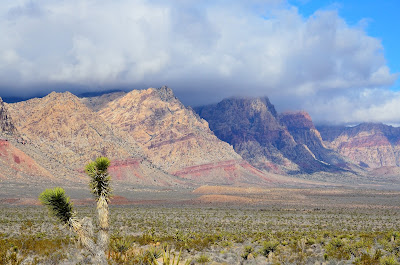Clark County Leaders Look to Encourage More Sprawl

Clark County Commissioners seem intent on approving more urban sprawl in the Las Vegas Valley at a meeting on February 7 . On the meeting's agenda is a plan by Gypsum Resources to build a nearly 5,000-home community on top of Blue Diamond Hill on the edge of Red Rock Canyon National Conservation Area , a popular outdoor escape near Las Vegas, Nevada. The County Commissioners have been advised by their own planning commission not to approve the project because the development would be a significant departure from the county's original master plan that requires the area remain low-density and rural. Red Rock Canyon National Conservation Area offers excellent hiking, camping, rock climbing, and cycling opportunities amidst stunning scenery for visitors and residents of nearby Las Vegas. The County is suing a grassroots community group opposed to the Blue Diamond Hill sprawl in an effort to undermine opposition to the plans, suggesting the County Commissioners are on th...




